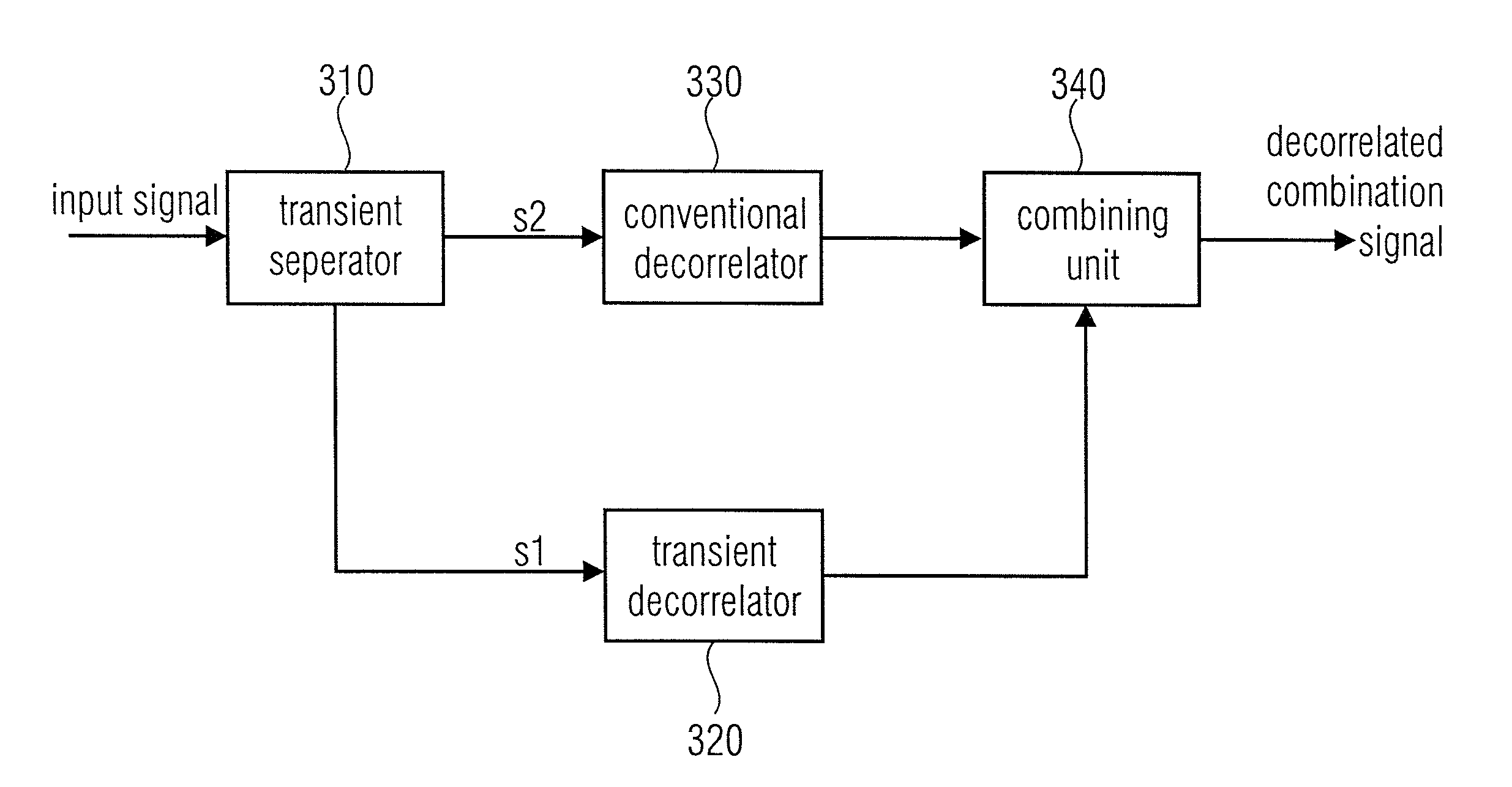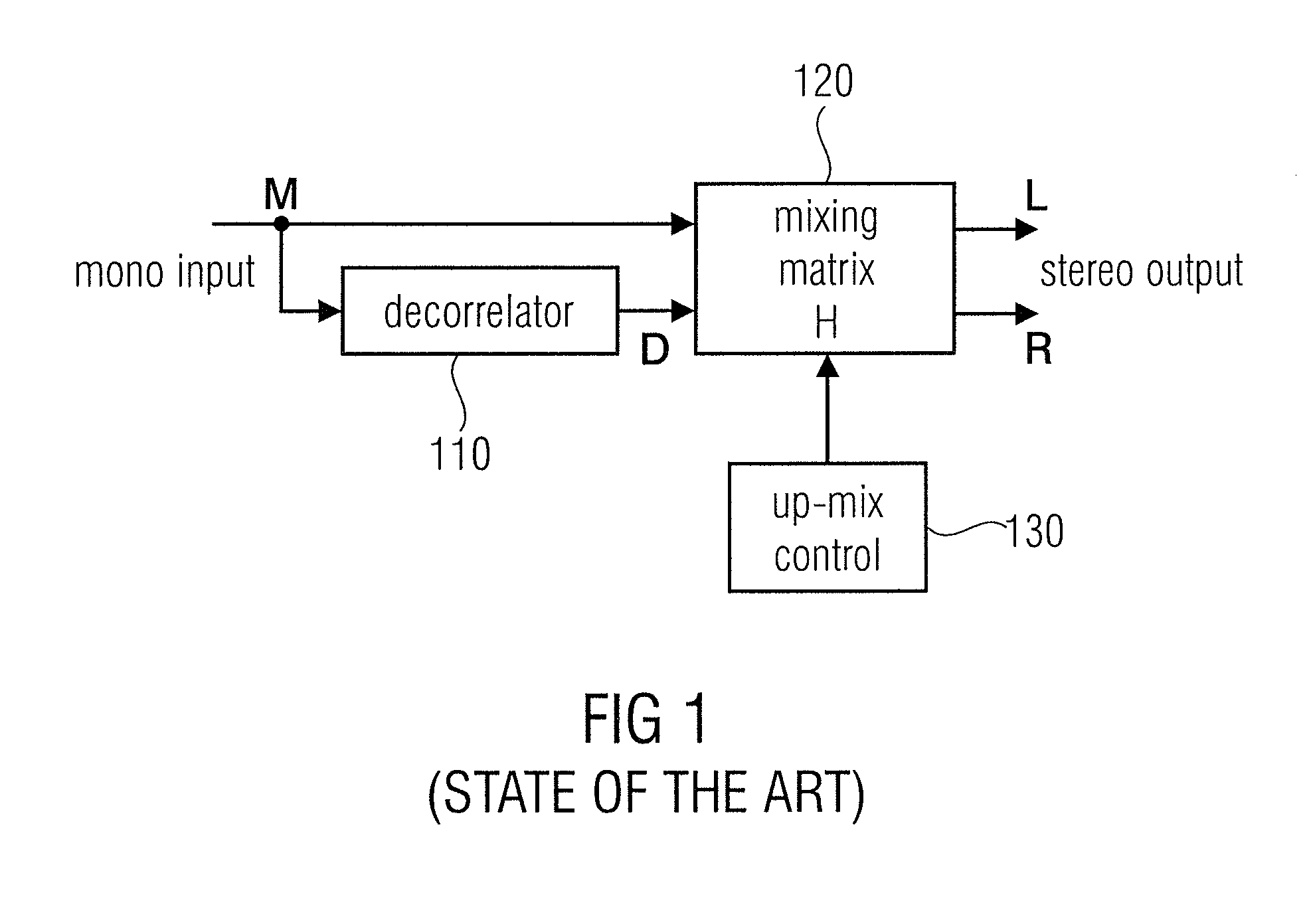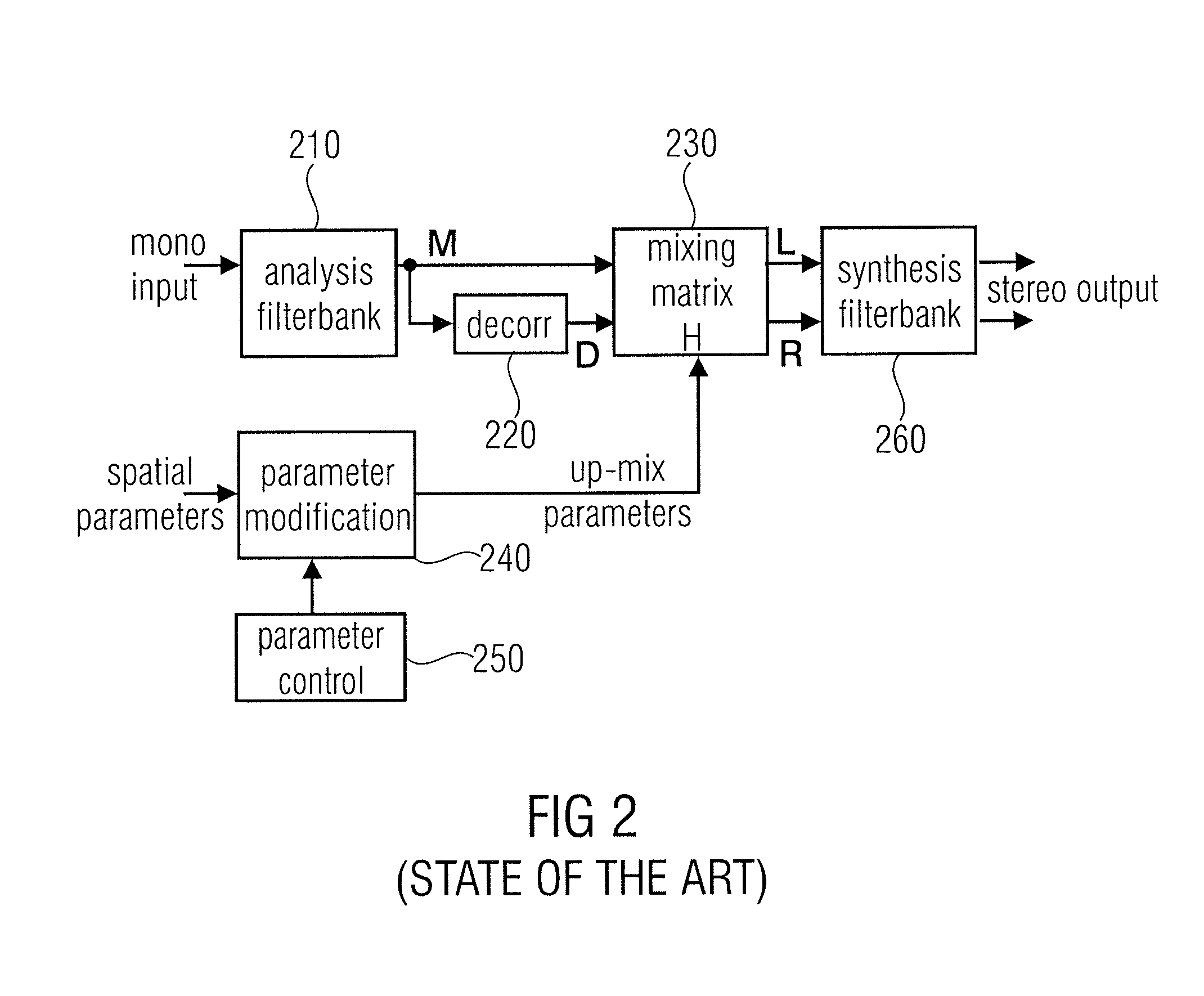Apparatus for decoding a signal comprising transients using a combining unit and a mixer
a technology of combining units and mixers, applied in the field of apparatus for decoding signals, can solve problems such as smooth noise, uneven clapping, and inability to distinguish claps, and achieve the effect of efficient transient signal processing
- Summary
- Abstract
- Description
- Claims
- Application Information
AI Technical Summary
Benefits of technology
Problems solved by technology
Method used
Image
Examples
Embodiment Construction
[0059]FIG. 3 illustrates an apparatus for generating a decorrelated signal according to an embodiment. The apparatus comprises a transient separator 310, a transient decorrelator 320, a conventional decorrelator 330 and a combination unit 340. The transient handling approach of this embodiment aims to generate decorrelated signals from applause-like audio signals, e.g., for the application in the upmix-process of spatial audio decoders.
[0060]In FIG. 3, an input signal is fed into a transient separator 310. The input signal may have been transformed to a frequency domain, e.g., by. applying a hybrid QMF filter bank. The transient separator 310 may decide for each considered signal component of the input signal whether it comprises a transient. Furthermore, the transient separator 310 may be arranged to feed the considered signal portion either into the transient decorrelator 320, if the considered signal portion comprises a transient (signal component s1), or it may feed the consider...
PUM
 Login to View More
Login to View More Abstract
Description
Claims
Application Information
 Login to View More
Login to View More - R&D
- Intellectual Property
- Life Sciences
- Materials
- Tech Scout
- Unparalleled Data Quality
- Higher Quality Content
- 60% Fewer Hallucinations
Browse by: Latest US Patents, China's latest patents, Technical Efficacy Thesaurus, Application Domain, Technology Topic, Popular Technical Reports.
© 2025 PatSnap. All rights reserved.Legal|Privacy policy|Modern Slavery Act Transparency Statement|Sitemap|About US| Contact US: help@patsnap.com



